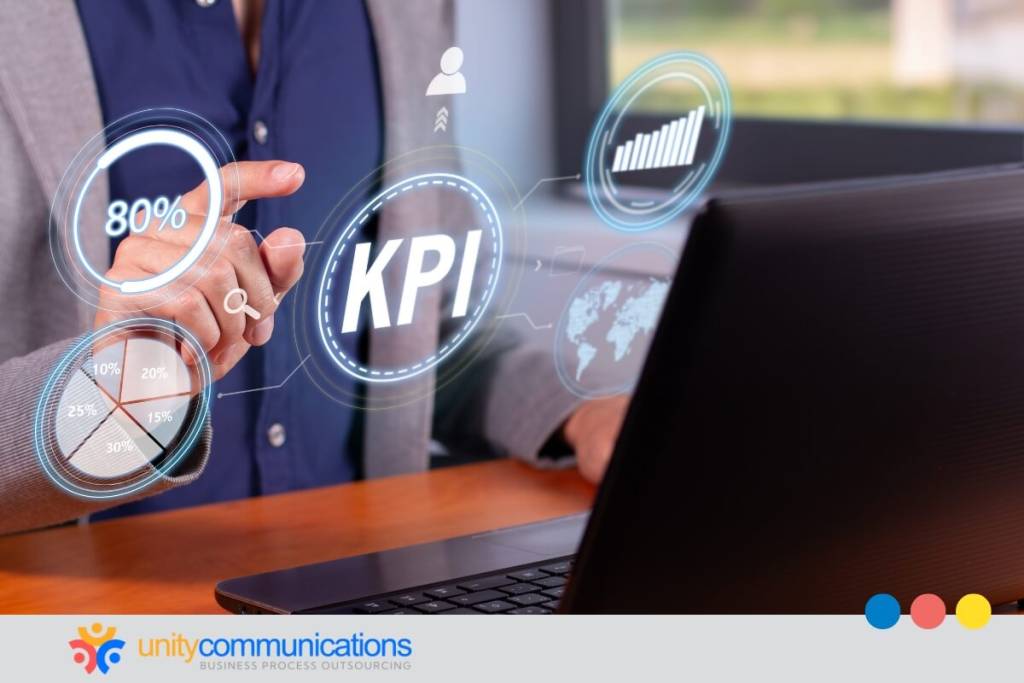Table of Contents
Recruitment process outsourcing (RPO) delivers scalable, expert-driven hiring solutions that reduce costs, speed up hiring, and improve talent quality. But how do you know it is effective in your business?
The answer lies in learning the metrics to track in RPO. Indicators such as time-to-fill and manager satisfaction reveal gaps, improve hiring, and show partner alignment.
Move beyond vanity metrics and start measuring what truly drives hiring success. Read below for the five key factors to analyze in this business process outsourcing (BPO) model.
5 crucial metrics to track in RPO

Tracking the proper metrics maximizes the impact of your RPO partnership. These five KPIs reveal how well your provider supports efficient, high-quality, and aligned hiring outcomes.
1. Time-to-fill for measuring hiring speed
Time-to-fill measures the days between the company opening a job and the candidate accepting the offer.
It’s one of the most critical RPO indicators because every unfilled role creates downstream impacts. These include lost productivity, increased pressure on existing teams, and potential delays in reaching business goals. Longer hiring cycles can also lead to missed opportunities and difficulty securing top talent, especially in competitive markets.
According to SHRM’s 2023 Talent Access Report, the average time to fill a non-executive position is 54 days. It extends to around 62 days when hiring for a C-suite position.
That said, speed isn’t everything. A fast hire isn’t successful if it leads to a poor fit or quick turnover. If your RPO partner consistently struggles to meet time-to-fill targets, it could point to deeper issues such as unclear job requirements, approval delays, or a weak sourcing strategy.
Treating this KPI as a leading indicator of recruitment health gives you visibility into what’s working and what needs attention.
2. Quality of hire for tracking new hire performance and retention
Unlike what BPO entails, RPO must prove its value through sustained talent outcomes, not just on operational efficiency. That’s why quality of hire is a vital metric in RPO. In fact, 31% of recruiters rank it as the top indicator of hiring success.
To make this metric count, HR, team leads, and your RPO partner must agree on what “quality” means for your organization. Examples include:
- Sales hires hit 80% of quota within their first 90 days.
- Customer service reps maintain a customer satisfaction (CSAT) score of 4.5+ within six months.
- Software engineers resolve at least 10 critical tickets per sprint within their first two months.
- Marketing analysts produce two actionable campaign insights within their first 60 days.
- Healthcare staff receive zero patient complaints and pass compliance checks in the first quarter.
High-quality hires aren’t just productive. They adapt, contribute, and grow with the business.
Don’t stop at measuring quality on a case-by-case basis. Analyze it across departments, locations, or hiring managers. This helps turn scattered wins into repeatable, scalable hiring success.
For example, entry-level sales reps hired through LinkedIn Recruiter hit 90% of their quota in 60 days. You can apply the same sourcing and evaluation method across all sales teams to boost performance company-wide.
Speed is essential, but quality of hire tells you whether those fast hires are right. This metric tracks long-term employee success through performance, fit, and retention.
3. Offer acceptance rate for gauging candidate engagement
Offer acceptance rate is one of the most revealing metrics to track in RPO, as it reflects how well your value proposition attracts top talent. A low acceptance rate can highlight deeper issues such as unrealistic salary ranges, vague job expectations, or a lack of responsiveness from hiring managers.
To get the most from this KPI, ask your RPO provider to break it down by role type, hiring source, and geography. For example, candidates referred internally often have higher acceptance rates than those sourced through job boards. The insights help fine-tune your strategy to improve areas where engagement falls short.
4. Submittal-to-interview ratio for assessing screening effectiveness
Submittal-to-interview ratio shows how many candidates your RPO sends before one gets an interview. Ideally, you want a ratio of 3:1 (one interview for every three submissions) or better. This indicates your partner effectively understands your needs and screens qualified candidates.
However, you don’t want it excessively high, which might mean a poorly calibrated screening process. Either the job description isn’t clear, or the RPO team doesn’t grasp the hiring manager’s expectations. Fixing this early saves time, reduces interview fatigue, and improves the recruitment experience.
You can also maximize the KPI’s value by analyzing it alongside time-to-interview and interview-to-hire ratios. Together, they show how easily candidates move through the funnel and where bottlenecks appear.
5. Hiring manager satisfaction for measuring internal expectation alignment
Hiring manager satisfaction is one of the overlooked metrics to track in RPO. It indicates how well the recruitment process aligns with business needs. Smooth, collaborative recruitment delivers better hires faster, reduces rework, and builds trust.
To drive better alignment, integrate hiring manager satisfaction into your RPO partner’s performance scorecard. When internal stakeholders feel heard and involved, they’re more likely to collaborate effectively, give timely feedback, and support process improvements. These turn RPO into a strategic outsourcing solution that delivers consistent, high-quality results.
You can also measure satisfaction at key stages, along with other indicators, such as communication clarity, candidate quality, responsiveness, and process efficiency. A disengaged or frustrated hiring manager often signals deeper issues requiring prompt attention from your RPO partner and internal HR.
The best RPO programs don’t just impress candidates. They win the internal team’s trust by consistently delivering results, aligning with company values, and making hiring leaders feel supported every step of the way.
The bottom line

RPO success isn’t just about hitting metrics—it’s about using them to make smarter decisions. The best programs track, analyze, and act on KPIs to improve results over time.
For greater impact, link metrics to track in RPO to business outcomes such as retention or revenue per hire to help prove returns, align hiring with company goals, and make more informed decisions that drive long-term value.
Ready to turn your recruitment data into a competitive advantage? Let’s connect and explore how the right RPO strategy and metrics can boost hiring performance.




